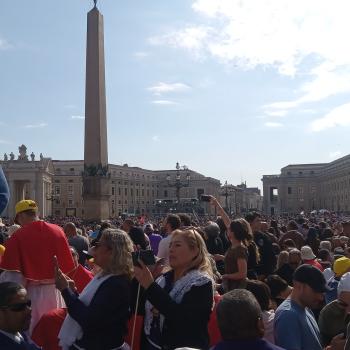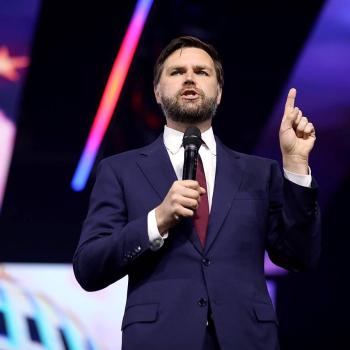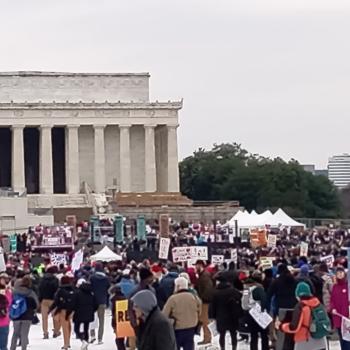On this beautiful day on which we remember the Last Supper of our Lord, I will offer some reflections about what that meal was. My hope and prayer is that, by doing so, you will be able more deeply to enter into the profound experience of this night.
1. The Last Supper was a reconfiguring of the Exodus and Return from Exile around the figure of Jesus himself. The Last Supper was a quasi-Passover meal (as I’ve discussed here), probably celebrated on the night before the day of preparation for Passover, as a memorial of the Exodus, as were all Passover meals. Yet crucially, what Jesus did was to take the story of the Exodus and make that story his own story, the story of his own life. Passover meals were also laden with Return from Exile themes, since for many, the return from Exile in Babylon had never fully taken place. The restoration of the monarchy and temple had never taken place in a satisfactory way.
Jesus brought together these two memories by his words: “This is my blood of the covenant.” These words evoke two scriptures from the Old Testament: Exodus 24:8 and Zechariah 9:9-11. In Exodus, Moses splashes half of the blood of a bull upon the people, and half upon the altar and proclaims, “This is the blood of the covenant” in order to ratify the covenant between God and his people. To some degree, this covenant was continually renewed in Temple practice. Jesus was now re-forming the Exodus covenant around himself and his own blood. His own blood, shed on the cross, would be the covenant blood between God and the New Israel.
Second, these words evoke Zechariah 9:11 in particular: “Because of the blood of my covenant with you, I will set your prisoners free from the waterless pit.” This portion of Zechariah was written after the return from Exile while under Persian rule, and it still looks forward to another Exodus-like event, a full return from Exile. Jesus makes that event his own coming death, and his resurrection the complete return from Exile.
It is also in view of the Exile that we should read Jesus’ words in Matthew’s version of the Last Supper: “for the forgiveness of sins.” Jesus was not speaking here of some abstract forgiveness or atonement theory but rather about the return from Exile. In Deutero-Isaiah, when God brings his people back from Exile, he will forgive their sins (Is 43:25). Forgiveness of sins is a sign that Israel is back in the Promised Land, that their relationship with God, marred by the sins that led to Exile, has been fully restored. Jesus proclaimed in the prophetic action at the Last Supper that in his person Israel was returning from Exile, a new Exodus was being accomplished, and that all of this would take place through his death on the cross and resurrection from the dead.
The same is true of the bread. A contemporary of Jesus, Gamaliel, observes in the Mishnah that the bread at the Passover meal represents the redemption from Egypt. This redemption would now take place, not in a past event, but in the death on the cross.
2. The Last Supper was a surrogate for sacrifice. At the Last Supper, Jesus re-drew the lines of many of Israel’s primary symbols around himself and his own life. The Exodus story was his story. The Exile story was now his story. And Temple activity was now his activity. As Prophet, Jesus performed a symbolic action with his Last Supper that anticipated his death on the cross in which the return from Exile will be completed. That has just been demonstrated. Instead of remembrance meals being about the Exodus, they would from now on be about Jesus’ death. The bread would no longer be a representation of the redemption from Egypt. It would now be a reference to the sacrificed body of Jesus.
But as Priest, Jesus went even further. In view of his recent confrontation in the Temple with the religious leaders, Jesus was now re-drawing the sacrificial acts around himself. As Bruce Chilton points out, “blood” and “body” in Aramaic can carry a strongly sacrificial meaning on their own, and that is the most logical meaning for them in the context of a quasi-Passover meal that comes right after Jesus’ profoundly symbolic action in the Temple and prediction of its destruction. Jesus was in effect saying “this bread now serves for us as the flesh of sacrifice; this blood serves for us as the blood of sacrifice.” Jesus replaced Temple animals with bread and wine, and then he linkee that bread and wine to his death on the cross: “Which will be given up for many.”
At the Last Supper, Jesus made himself the last sacrifice that replaced all temple sacrifice. He made himself a surrogate for sacrifice, a sacrifice-against-sacrifice, as Rene Girard says, doing away with all history-of-religions sacrifice and replacing it with an invitation to his followers to regularly link themselves to the self-offering of Jesus on behalf of all.
Jesus offered himself as a mimetic surrogate of sacrifice. There was no longer any need to kill animals. This critique of temple sacrifice had been going on for a long time in the prophetic tradition, most strongly in Jeremiah. Jesus finally brought the sacrificial tradition to a definitive close, offering himself, and inviting his followers to offer themselves with him on behalf of the many. In continually imitating Jesus’ perfect self-offering love, all sacrificing of others (animals or otherwise) could now cease. The only sacrifice now required was a self-sacrifice in union with Jesus and in the pattern of his passion, death, and resurrection. The fact that this message was Paul’s fundamental gospel shows that this was the core belief of the early Christians around which their memorial meals focused.
3. The Last Supper was an eschatological banquet. In some ways, even more than it was a quasi-Passover meal, the Last Supper was Jesus’ final eschatological banquet with his disciples. Meals were one of the primary ways that Jesus proclaimed and established the kingdom of God. The Gospel of Luke is arguably arranged around 8 meals, the Last Supper being the 6th. The multiplication of the loaves and fishes is the only miracle that occurs in all four gospels. In John 6, the multiplication miracle is clearly linked to the Eucharistic meal shared by the Johannine community.
Eschatological meals in the Old Testament were often linked to the Temple. For example, Isaiah 25:6-9, possibly written just a couple of hundred years before Jesus, connects the Messianic banquet to the Temple Mount. The eschatological banquet would complete and transcend the temple sacrifices. Jesus in effect in his final meal with his disciples proclaimed that the eschatological banquet in the future that was a symbol of the perfect reign of God was now being inaugurated: “I shall not drink again the fruit of the vine until the day when I drink it new in the kingdom of God.” This was the last of hundreds of eschatological meals that Jesus shared with his disciples throughout his life. In this one he proclaimed that the kingdom of God is officially inaugurated by his self-offering on the cross. The eschatological banquet was the medium of Jesus’ anti-sacrificial sacrifice by which a new community was formed around a new Exodus in his Passion and the new sacrificial banquet became a partaking in his body and blood.
4. So, the Last Supper was a bringing together of all of Israel’s past hopes into an action in the present in which they are reconfigured around the person of Jesus in ultimate view of an eschatological promise for the future. This is what the Last Supper was. It re-drew the lines of the primordial Jewish symbols and hopes — Exodus, Return from Exile and forgiveness of sins, Sacrifice, Temple, Eschatological Hope — around the person of Jesus himself. Eventually, as the early Christian communities continued to remember — allowed themselves to be taken back and invited into Jesus’ own death and resurrection about which Paul spoke so frequently — they came to understand that the banquet in which they were partaking, the blood of the covenant that they were offering and the new Exodus bread that they were eating was actually the very body and blood of Jesus, his own Life offered to them for the sake of his body, the Church. In this sense, the following insight of Vorsier quoted by Congar makes perfect sense:
The Church did not begin by saying that bread was being changed into Christ’s Body and that wine was being changed into Christ’s Blood; what it began by saying and still says is: ‘This is my Body, this is my Blood;’ the additional concept of change may almost be called an afterthought.
The Last Supper was not the first Mass. It was a richly symbolic action by which brought to completion Israel’s former symbols and inaugurated-in-anticipation the New Israel of God. This New Israel was actualized by the death, resurrection, and sending of the Spirit. As the first Christians performed this sacred meal, they realized that they were re-enacting, not the Last Supper of Jesus, but rather his passion, death, and resurrection. They were “dying and rising” with him, as Paul so often preached. They were entering into his self-offering so as to imitate his love and offer themselves as “living sacrifices, dedicated and fit for his acceptance, the worship offered by mind and heart” (Rom 12:1).
As you partake tonight in this Supper of the Lamb, may you be more closely united to the self-offering love of Christ and more tightly incorporated into his Body, the Church.













